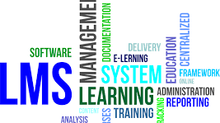eLearning for mobile devices
- Dylan Hedges
- Jul 29, 2019
- 3 min read
Traditionally eLearning and digital training has been taken online using a laptop or PC and taken in either the workplace or at home, however over the past few years eLearning for portable devices such as smartphones or tablets have seen a rise in popularity as learners find it more convenient to take training on-the-go and at a time of their choosing. Mobile learning or mLearning is a type of eLearning that is taken on a mobile device, when compared to traditional eLearning mLearning has several differences in both how it is taken and its design. When designing your eLearning you might find that one design works fine for a large screen of a computer or laptop but on a smartphone it doesn’t work.
Below are some of common pitfalls to avoid when designing eLearning that can be used on mobile devices.
1. Responsive
Having a responsive design is one of the key things when it comes to designing eLearning for mobile devices. The concept of a responsive design is that you create one eLearning that works on a variety of devices. For example on a laptop or PC you typically have a large screen, this means you can fit a reasonable amount of text and images on screen without it looking cluttered, however once a mobile device you find that the design does not work at all and learners are scrolling for ages to read all the text on the screen or images are stretched and do not fit the page as well as they do on a laptop. When designing your next eLearning course it is important to consider not only the design for a computer but also for smartphones and tablet.
2. Offline
When taking eLearning on a computer or laptop you will most likely have a stable internet connection, this means that you can access eLearning with relatively few issues. However, for mobile devices this can be a very different story, while on the go a learners connection can drop in and out depending on where they are and their surroundings, this can cause a lot of issues for your course due to slow loading speeds and the ability to load course assets. One way to resolve this issue is to have the ability to download courses so that they can be played offline without a connection. The benefit of this is that learners can download courses at their home or place of work and take them while on the go without interruption due to connection issues, as a result learners can focus more on what they are learning and have less interruptions.
3. Navigation
Navigation is an important thing to consider when designing your eLearning course, the navigation and buttons you interact with can be very different on a mobile device compared to a laptop or PC. On a computer you typically have much more space so buttons can be larger and placed much further apart, however on a mobile device the screen space you have is significantly less, particularly for smartphones, this means that navigation elements and buttons need to be carefully considered so that it doesn’t overlap with any of your content or interfere with other interactive elements. It is also important to consider this for any learning activities or areas of interaction you have in your course.


































Comments